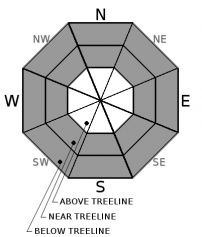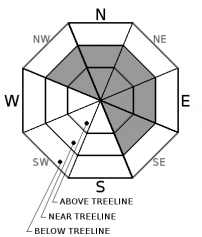| Monday | Monday Night | Tuesday | |
|---|---|---|---|
| Weather: | Sunny | Clear becoming partly cloudy | Partly cloudy |
| Temperatures: | 26 to 31 deg. F. | 9 to 17 deg. F. | 36 to 41 deg. F. |
| Mid Slope Winds: | Variable | Variable | Variable |
| Wind Speed: | Light | Light | Light |
| Expected snowfall: | 0 | 0 | 0 |
| Monday | Monday Night | Tuesday | |
|---|---|---|---|
| Weather: | Sunny | Clear becoming partly cloudy | Partly cloudy |
| Temperatures: | 24 to 29 deg. F. | 11 to 16 deg. F. | 34 to 39 deg. F. |
| Ridge Top Winds: | Variable | Southwest | Southwest |
| Wind Speed: | Light | Light increasing to 10 to 15 mph with gusts to 30 mph after midnight | 10 to 15 mph with gusts to 35 mph |
| Expected snowfall: | 0 | 0 | 0 |

























